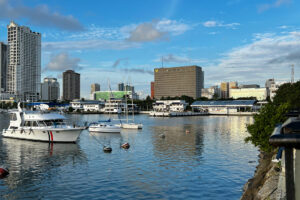THE BANGKO SENTRAL ng Pilipinas (BSP) is working to ensure the country’s exit from the Financial Action Task Force’s (FATF) “gray list” of jurisdictions under increased monitoring for anti-money laundering risks by next year.
The central bank has been working with the National Government to “further strengthen the country’s risk-based anti-money laundering/countering terrorism and proliferation financing (AML/CTPF) supervisory regime,” it said in a statement on Tuesday.
“The BSP remains committed to reinforcing the integrity of the Philippine financial system and continues to conduct risk-based AML/CTPF examinations, thematic reviews, and capacity building programs,” it added.
The FATF last week kept the Philippines in its list of jurisdictions under increased monitoring for “dirty money” risks. The country has now been on the gray list for over three years or since June 2021.
Still, it said the country has addressed the remaining deficiencies in its recommended action items.
The dirty money watchdog is set to conduct an on-site visit to verify the Philippines’ progress in its action plan and implementation of reforms. This is set to take place anytime between now and February 2025.
“The Philippines will be removed from the FATF gray list after successful verification,” the BSP said.
The central bank has been implementing the necessary initiatives to “enhance money service business supervision and the effectiveness of targeted financial sanctions framework for terrorism and proliferation financing,” it said.
“The BSP also recognizes the continuing efforts of banks and other BSP-supervised financial institutions to improve their AML/CTPF frameworks,” it added.
Exiting the gray list will help support overseas Filipino workers (OFWs) by making remittances and cross border payments faster and more affordable, the central bank said.
The Anti-Money Laundering Council (AMLC) earlier said the country is on track to exit the gray list by 2025.
In 2002, the FATF blacklisted the Philippines for having no legal anti-money laundering framework. It was removed from the blacklist a year later after the passage of the Anti-Money Laundering Act.
The FATF Plenary, the intergovernmental organization’s decision-making body, usually meets in February, June and October.
Data from Moody’s Investors Service showed that from 2018 to 2023, the Philippines was among the top five countries in Southeast Asia with money laundering activity events added over the five-year period.
The number of money laundering events added in the Philippines increased by 45% from 2022 to 2023, according to Moody’s. — Luisa Maria Jacinta C. Jocson
